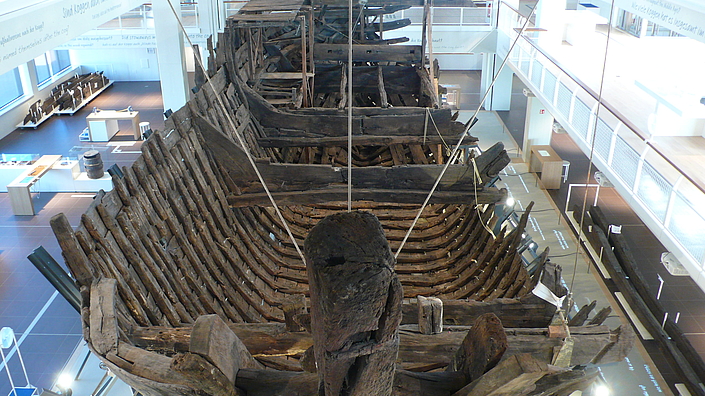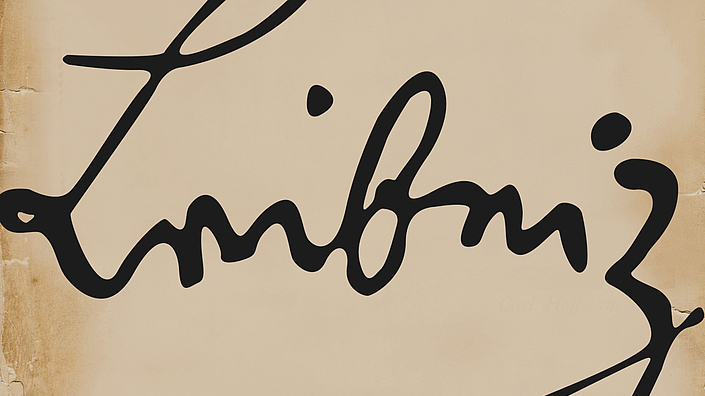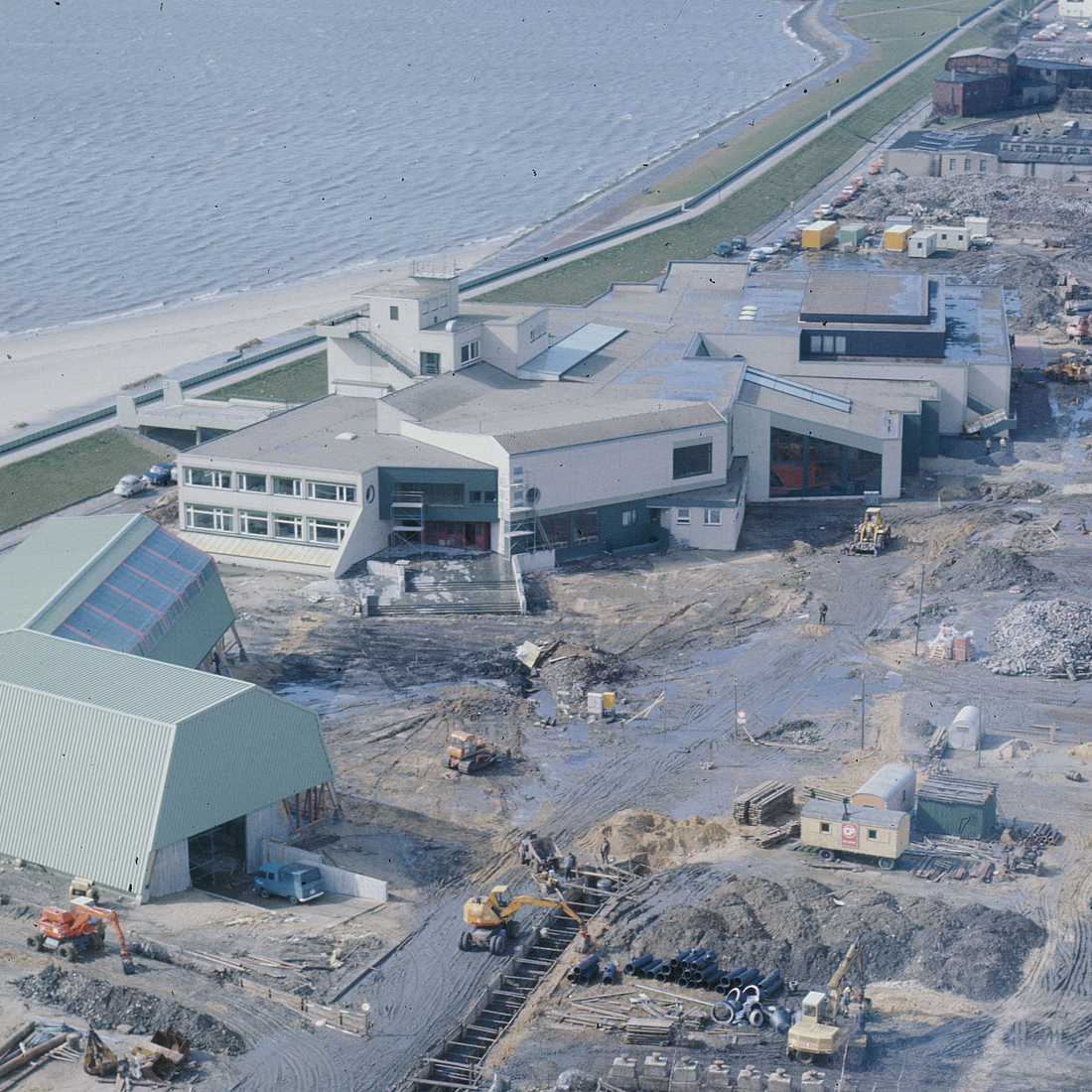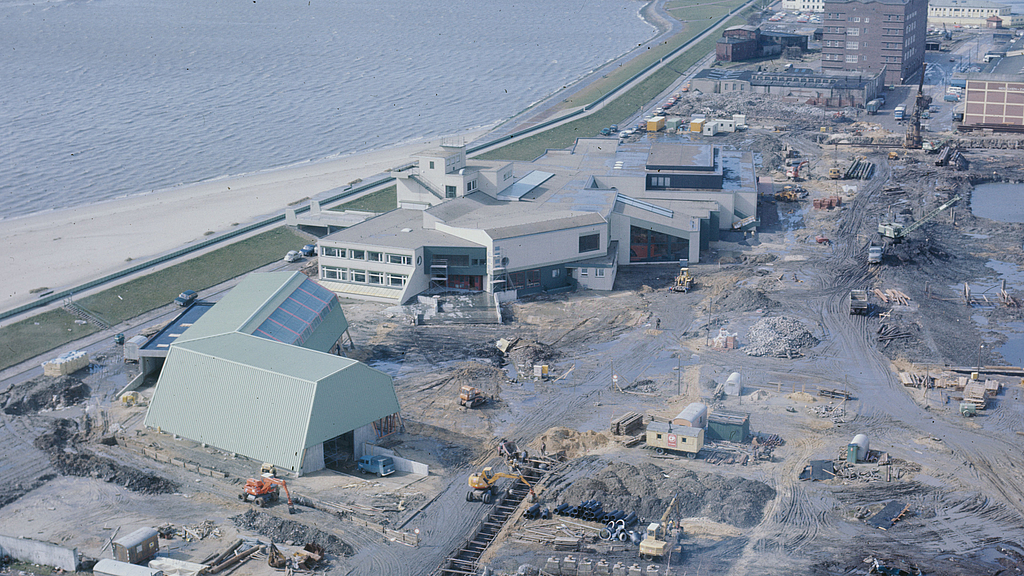The history of the German Maritime Museum
Our maritime museum is a research museum with history, and is currently undergoing change and realignment.
Our German Maritime Museum was founded in 1971 as an independent foundation legally responsible under civil law, opened in 1975 as a museum, and incorporated in 1980 into the joint research promotion by the federation and the states ("Blaue Liste"/today "Leibniz Association). Our affiliation with the Leibniz Association was confirmed in 2017 by an evaluation commission and the Gemeinsame Wissenschaftskonferenz (Joint Science Conference).
Citizen involvement was the engine behind the founding of our museum. A significant component of our collection is an archaeologically as yet undocumented mediaeval ship find from the 14th century ("cog"), which was uncovered in the Bremen harbour basin in October 1962 during excavation work. The Förderverein Deutsches Schiffahrtsmuseum e.V. and the Kuratorium zur Förderung des Deutschen Schiffahrtsmuseums e.V. were formed in this connection. Both associations drove forward the founding of the German Maritime Museum and have accompanied us through to today.
The cog was the foundation stone for our museum and our self-conception. For this reason, we decided to implement the first construction and concept-related ideas for our realignment, which we have been carrying out since 2012/13, in the Cog Room. Following reopening of the exhibition, the Bangert building will be all about ships and our blue planet, and in the Scharoun building the focus will be on shipping history in its social, political and economic dimensions. We already extend you a warm welcome!
Mankind & the Sea – Reorientation for our research museum
It is our goal to reposition our museum in the scientific and museum landscape as one of eight Leibniz research museums. In doing so, our focus is on the changeful and momentous relationship between people and the sea, taking maritime technologies as an example. What interests in using ships do we have today, did we used to have and will we have in the future? What significance do ships have in the context of the maritime economy, research shipping or against a background of altered environmental practices? What consequences does the exploitation of the ocean with ships and other maritime technology have for our perception, our behaviour, our environment? How did we and do we live in a world so technologically and politically changed? Guided by these questions, we have set a course for a holistic realignment. Our research on the theme of "Mankind & the Sea" forms a starting point.
The construction-based redesign includes the building of a research depot. With this, we will create an attractive place for research, teaching and exhibition conception. Aside from storage and fuction rooms, a study zone for object-related research and teaching is also planned. With the research depot, we would like to create a research infrastructure that both enables the future-orientated conservation of the objects and generates synergy effects for the invigoration, intensification and communication of collection-related discourse.
Related Articles
-The "Bremen cog" from the Hanseatic period – be amazed at 600 years of history
The "Bremen cog" is the world's best-preserved trade ship of the Middle Ages. In our exhibition, you'll learn more about life on board, the construction and today's cult surrounding this shipwreck from 1380.

Research and exhibiting at the Leibniz research museums
We – the German Maritime Museum – are one of eight Leibniz research museums. We research, conserve, exhibit and communicate German maritime history.



